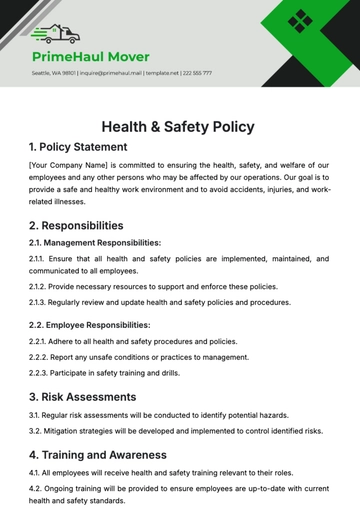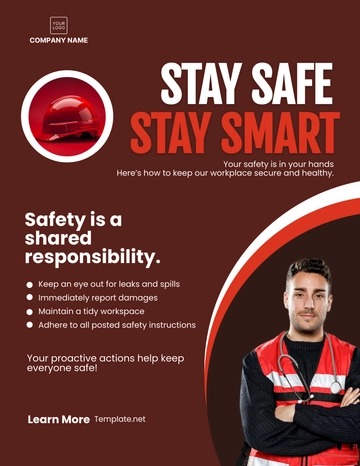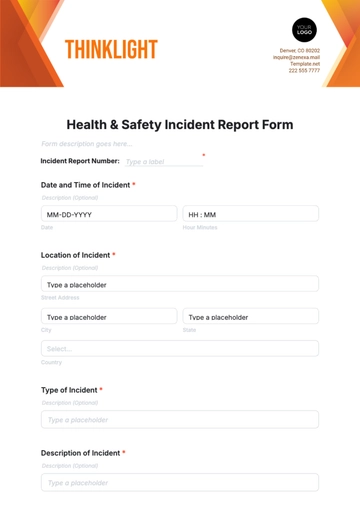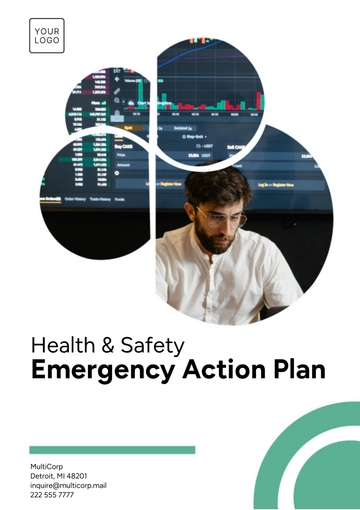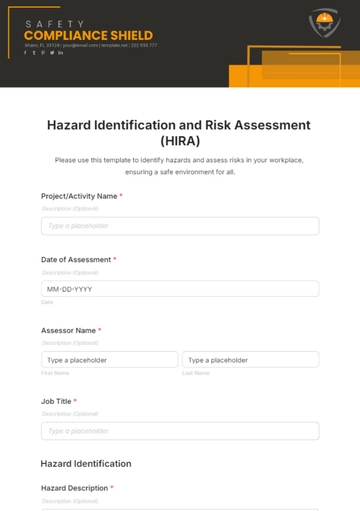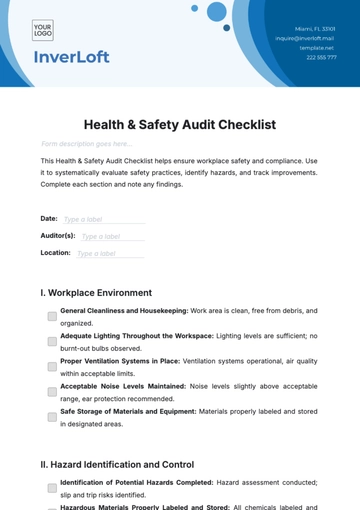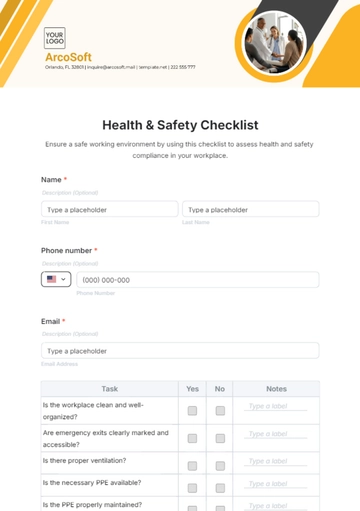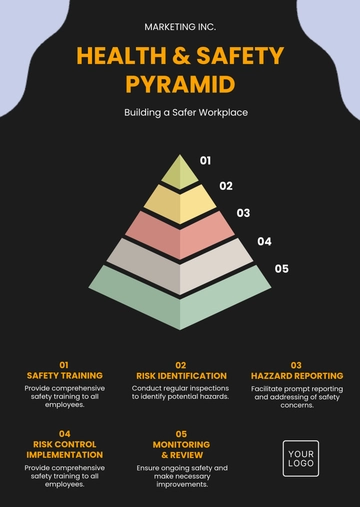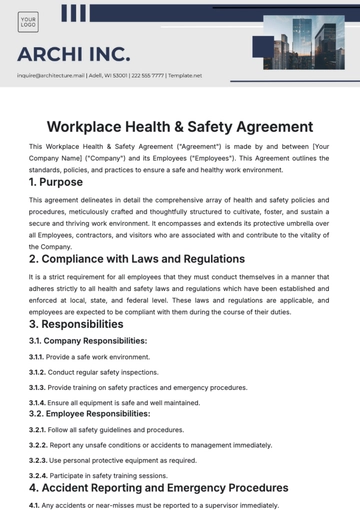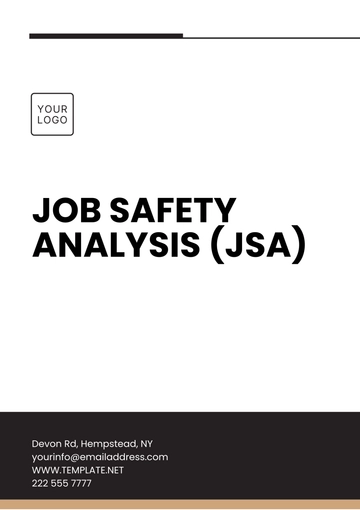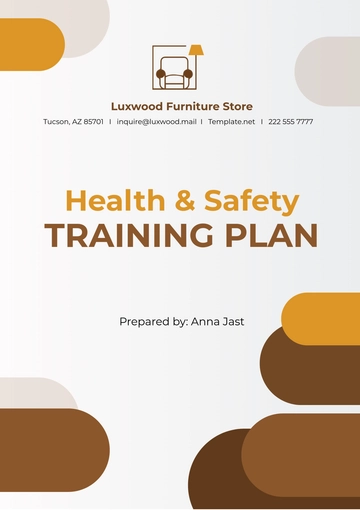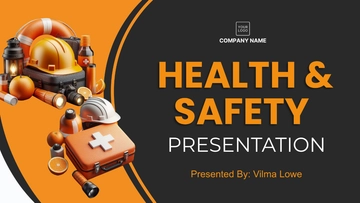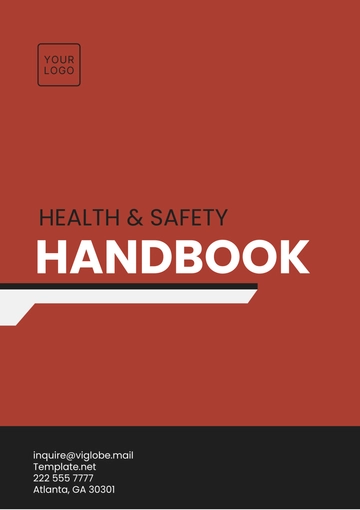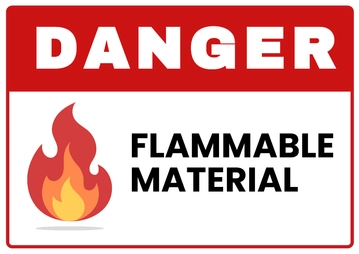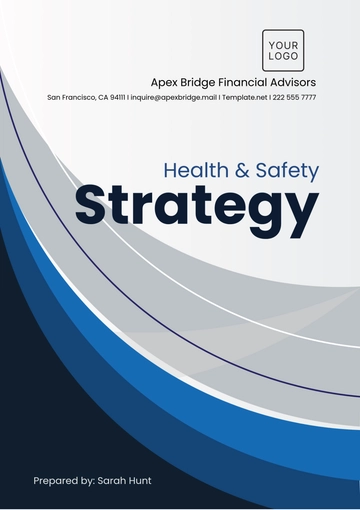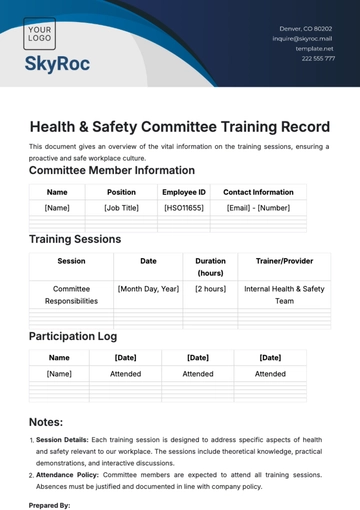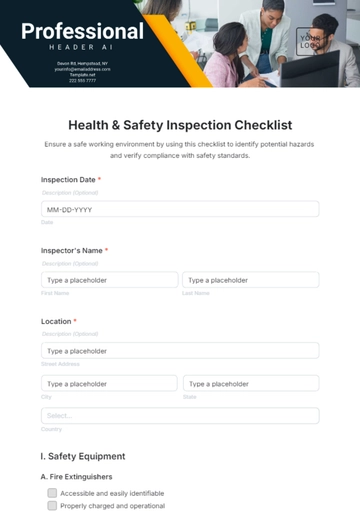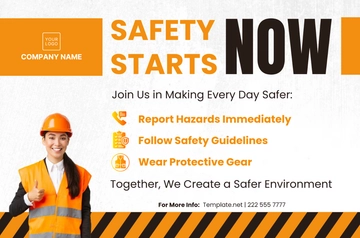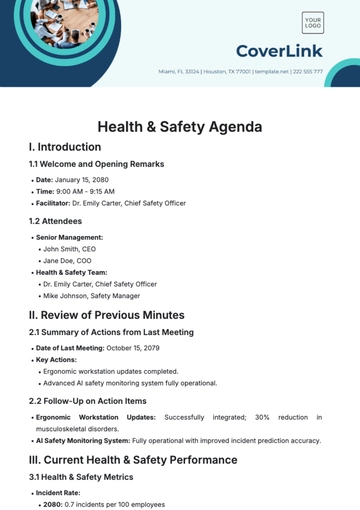Free Health & Safety Committee Guide

Introduction
This guide is designed as a practical resource for employers, managers, and employees who are committed to creating and maintaining a safe and healthy work environment. The formation of a Health & Safety Committee is not just a regulatory requirement but a fundamental step towards fostering a culture of safety and well-being in the workplace.
The effectiveness of a Health & Safety Committee hinges on its ability to function as a cohesive unit that represents the diverse perspectives within an organization. Through its structured approach to safety management, the committee can significantly reduce workplace incidents, enhance employee morale, and improve overall organizational productivity. In this guide, you will find detailed information on each aspect of forming and managing a Health & Safety Committee, including its composition, roles and responsibilities, meeting management, incident reporting, training, performance monitoring, and continuous improvement strategies.
Establishing the Committee
Objective:
The primary objective of establishing a Health & Safety Committee is to create a forum for management and workers to work cooperatively to enhance workplace health and safety. This committee aims to identify potential hazards, develop strategies to mitigate risks, and foster a culture of safety across the organization.
Committee Composition:
The composition of the Health & Safety Committee is crucial for its effectiveness. It should include a diverse range of members from different departments and levels within the organization to ensure a comprehensive approach to health and safety.
Role | Responsibilities |
Chairperson | Leads meetings, sets the agenda, oversees action plan execution. |
Secretary | Records minutes, manages documentation, communicates decisions. |
Management Representative | Provides insight into organizational policies, ensures alignment with business goals. |
Worker Representative | Represents the views and concerns of the workforce, ensures employee engagement. |
Health & Safety Expert | Offers expert advice on health and safety matters, suggests improvements. |
Emergency Coordinator | Plans and coordinates emergency response strategies and drills |
Committee Selection Process
1. Chairperson and Secretary: Selected by top management to ensure leadership and organizational alignment.
2. Representatives: Elected or nominated from various departments to ensure diverse representation.
3. Expert and Coordinator: Appointed based on expertise and experience in relevant areas.
Roles and Responsibilities
Each committee member plays a vital role. For example, the Chairperson not only leads meetings but also liaises with senior management. The Worker Representatives are instrumental in bringing forth concerns and suggestions from the workforce, making sure that the voice of the employees is heard and considered.
Committee Responsibilities
Developing and Reviewing Policies
The committee should actively participate in the development and periodic review of health and safety policies. This includes:
Identifying areas where policies are needed, or existing policies require updates.
Collaborating with various departments to ensure policies are practical and effective.
Ensuring compliance with legal and regulatory requirements.
Risk Assessment and Hazard Identification
Conducting regular risk assessments is a critical responsibility. This involves:
Identifying potential hazards in the workplace.
Assessing the level of risk associated with each hazard.
Proposing measures to mitigate identified risks.
Health and Safety Training
The committee should oversee the development and implementation of health and safety training programs. This includes:
Identifying training needs based on risk assessments and incident reports.
Ensuring all employees receive appropriate training.
Evaluating the effectiveness of training programs.
Incident Reporting and Investigation
The committee is responsible for ensuring a robust incident reporting system is in place. This involves:
Developing and maintaining an incident reporting procedure.
Reviewing incident reports and conducting investigations.
Making recommendations to prevent future incidents.
Communication and Engagement
Effective communication strategies are essential to engage the entire workforce in health and safety matters. This includes:
Regular updates on health and safety issues to all employees.
Creating platforms for employees to voice their health and safety concerns.
Promoting a culture of safety through various communication channels.
Meeting Management
Frequency and Scheduling of Meetings
Regular meetings are essential for the committee to effectively manage health and safety issues. The frequency of these meetings should be determined by the specific needs of the organization but typically include:
1. Monthly Meetings: Recommended for ongoing review of health and safety issues, policy development, and action plan monitoring.
2. Ad Hoc Meetings: Convened as needed in response to specific incidents or urgent safety concerns.
Agenda Setting and Meeting Structure
The structure and agenda of the meetings are crucial for efficient and productive discussions. A typical meeting agenda might include:
Agenda Item | Description |
Opening Remarks | Brief overview of meeting objectives and recent updates |
Review of Previous Minutes | Discuss and approve the minutes from the previous meeting. |
Safety Concerns | Presentation and discussion of new or ongoing safety issues |
Action Item Review | Follow-up on action items from previous meetings |
Incident Reports | Review and discussion of recent incident reports. |
New Business | Introduction and discussion of new safety-related topics |
Closing Remarks | Summary of decisions made and action items for the next meeting. |
Record Keeping
Accurate record keeping is essential for tracking progress and maintaining accountability. The Secretary is responsible for documenting:
1. Minutes of Meetings: Detailed records of discussions, decisions, and action items.
2. Attendance Records: To monitor engagement and participation of committee members.
Incident Reporting and Investigation
Incident Reporting Mechanism
Establishing an effective incident reporting mechanism is critical for identifying and addressing safety issues promptly. Key components include:
1. Clear Reporting Channels: Defined paths for reporting incidents, accessible to all employees.
2. Anonymity and Confidentiality: Ensuring that employees can report incidents without fear of reprisal.
Investigation Procedures
A systematic approach to investigating incidents helps in understanding causes and preventing future occurrences. The process typically involves:
1. Immediate Response: Ensuring any immediate danger is addressed and affected employees receive care.
2. Gathering Information: Collecting data about the incident, including witness statements and physical evidence.
3. Analysis: Examining the information to identify root causes.
4. Reporting Findings: Documenting the results of the investigation and recommending corrective actions.
5. Follow-up: Ensuring implementation of recommendations and monitoring for effectiveness.
Incident Documentation and Analysis
Maintaining detailed records of all incidents and their investigations aids in identifying trends and areas for improvement. This documentation should include:
Document Type | Purpose |
Incident Reports | Detailed account of each incident, including causes and effects |
Investigation Reports | Findings from the investigation, including root cause analysis. |
Action Plans | Steps to be taken to prevent recurrence of similar incidents. |
Training and Education
Identifying Training Needs
The committee should assess and identify the training needs of the organization. This involves:
1. Conducting Skills Gap Analysis: Regularly assessing the health and safety skills and knowledge of the workforce to identify areas where training is required.
2. Evaluating Environmental Changes: Considering changes in the workplace or industry that might necessitate new training, such as new equipment or regulations.
Planning and Implementing Training Programs
Effective training programs are crucial for maintaining a safe work environment. The committee's role includes:
1. Developing Training Modules: Creating or sourcing training materials that are relevant and engaging.
2. Scheduling Training Sessions: Organizing sessions to ensure maximum participation, considering shift patterns and workloads.
3. Facilitating Training: Either conducting training internally or coordinating with external trainers.
Monitoring and Evaluation
To ensure the effectiveness of training programs, the committee should:
1. Track Participation and Completion: Maintain records of who has completed the training.
2. Evaluate Training Effectiveness: Gather feedback from participants and assess changes in safety practices or incident rates post-training.
Training Type | Description | Frequency |
General Safety Induction | Basic safety orientation for new employees | As needed |
Emergency Procedures | Training on emergency response and evacuation | Annually |
Hazard-Specific Training | Focused training on specific risks relevant to the workplace | Biannually or as needed |
Health and Safety Leadership | Training for managers and supervisors on safety leadership | Every 2 years |
Monitoring and Reporting
Performance Metrics
To measure the effectiveness of health and safety initiatives, the committee should track key performance indicators (KPIs).
Metric | Description |
Incident Rate | Number of incidents per [100] employees per year |
Training Completion Rate | Percentage of employees completing mandatory training |
Employee Safety Feedback | Results from safety surveys and feedback forms |
Audit and Inspection Results | Outcomes from regular health and safety audits |
Regular Reporting
The committee is responsible for preparing and presenting regular reports on health and safety performance to management and employees. These reports should include:
1. Incident Statistics: Data on the number, type, and severity of incidents.
2. Training and Compliance: Updates on training initiatives and compliance with safety regulations.
3. Recommendations: Suggestions for further improvements based on data analysis and feedback.
Continuous Monitoring
1. Regular Safety Audits and Inspections: To identify potential hazards and ensure compliance with safety procedures.
2. Employee Feedback Mechanisms: Such as surveys or suggestion boxes to gather input on safety concerns and the effectiveness of safety measures.
Continuous Improvement
Feedback Mechanism
One of the key responsibilities of the Health & Safety Committee is to foster an environment of continuous improvement. This starts with establishing effective feedback mechanisms:
1. Employee Safety Surveys: Regular surveys to gather employee feedback on the workplace environment, safety concerns, and effectiveness of current safety measures.
2. Suggestion Box or Online Portal: A platform for employees to anonymously submit safety suggestions and concerns.
3. Safety Meetings and Forums: Regular meetings or forums where employees can openly discuss safety issues and potential improvements.
Review and Update Policies and Procedures
Regularly reviewing and updating health and safety policies and procedures ensures that they remain relevant and effective:
1. Annual Policy Review: A structured review of all health and safety policies to ensure they are up-to-date with current regulations and workplace conditions.
2. Procedure Audits: Regular audits of safety procedures to identify areas for improvement.
Implementing Improvement Plans
Based on the feedback and reviews, the committee should develop and implement improvement plans:
1. Action Plan Development: Creating specific, measurable, achievable, relevant, and time-bound (SMART) action plans to address identified safety issues.
2. Implementation and Monitoring: Rolling out the improvement plans and monitoring their effectiveness.
Improvement Area | Action Plan Example | Implementation Timeline |
Emergency Response | Update emergency response procedures and conduct drills. | [Date] |
Hazard Communication | Enhance training on hazardous material handling. | [Date] |
Workplace Ergonomics | Assess and improve workstation ergonomics. | [Date] |
Benchmarking and Best Practices
The committee should also look beyond the organization for improvement ideas:
1. Industry Benchmarking: Comparing the organization's health and safety practices with industry standards to identify areas for improvement.
2. Adopting Best Practices: Researching and implementing best practices from other organizations and industries.
Future Planning
The committee should engage in future planning to anticipate and prepare for potential changes and challenges:
1. Technology Integration: Exploring new technologies for enhancing health and safety, such as wearables for monitoring health risks or software for incident tracking.
2. Regulatory Changes: Staying informed about upcoming regulatory changes and preparing the organization for compliance.
Conclusion
By following the guidelines outlined in this document, your committee can effectively address health and safety issues, foster a culture of safety, and drive continuous improvement within your organization. The Health & Safety Committee is at the forefront of this journey, steering the organization towards not only regulatory compliance but also towards a proactive safety culture that values and protects its most important asset - its people. Your commitment to health and safety is not just a legal obligation, but a moral one, reflecting your organization's dedication to the well-being of its employees.
- 100% Customizable, free editor
- Access 1 Million+ Templates, photo’s & graphics
- Download or share as a template
- Click and replace photos, graphics, text, backgrounds
- Resize, crop, AI write & more
- Access advanced editor
Enhance your health and safety initiatives with Template.net's Health & Safety Committee Guide Template. This editable guide offers a comprehensive framework for establishing and running an effective committee. A vital resource for organizations, it provides best practices, roles, and responsibilities to ensure workplace health and safety standards are met and maintained seamlessly.

